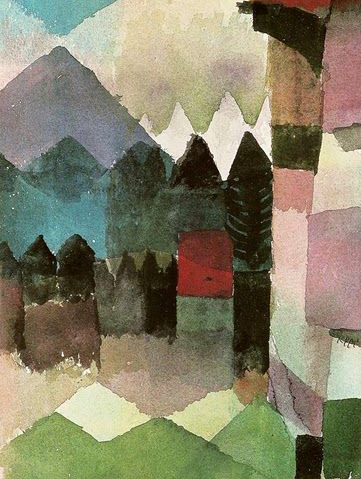Föhn Wind in Franz Marc's Garden demonstrates the abstract watercolour style of Paul Klee during this period of his career
Many of us encounter Paul Klee through reproductions of his more richly coloured paintings. His delight in colour produced many works with an almost jewelled or mosaic-like quality – like his “Golden Fish”.
But his passion for colour manifested itself in many ways, as did his often overlooked skill as a draftsman. Here, he brings his unique treatment of light, and our impression of it, to a landscape with a special significance for him.
A visit to Tunisia may seem an unlikely place to start – especially in understanding a painting created under Germanic skies.
But Klee’s visit to Tunis in 1914 was a revelation for the young artist. Suddenly, colour assumed a new primacy in his work and became a defining element: 'Colour and I are one', he declared.
A first truly abstract work was produced the same year: “In the Style of Kairouan” represents a new direction, a new confidence and an approach to colour that some have described as ‘poetic’.
“Föhn Wind in Franz Marc's Garden” represents a step into abstraction, but with strong figurative elements still present. Klee is experimenting with the rectangles and rhomboid forms that were often his basic units of composition.
A grassy green extends away from the foreground; pale pinks and purple to the right of the frame suggest alpine light cast against the wall of a building, below the dark eaves of the roof.
Into the middle distance, the dark peaks of a pine forest are suggested – a single block with branch forms stands in for the whole – while breaks in cloud and heavy skies interact with the peaks of a mountain on the horizon. The 'Föhn' in the title is the mountain wind which, like the French mistral, is said to have a mood-altering effect on those susceptible to it – perhaps including painters.
Franz Marc was one of the leading members of the Blaue Reiter movement and an inspiration to other German artists in the Expressionist movement.
Like Klee, he was fascinated by the potential in colour and the liberating expressive possibilities of abstraction. Appropriately, the original painting now hangs in the Lenbachhaus in Munich, where Marc was born.




